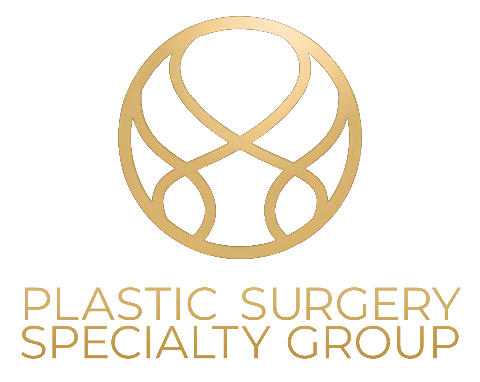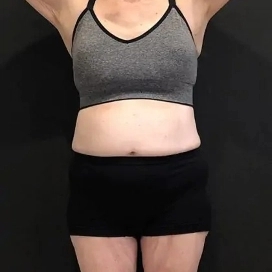Scar Revision
Conveniently located to serve the areas of Marin, San Francisco, Sonoma and Napa

Scar revision is a selection of procedures intended to improve or reduce the appearance of scars. Scar revision treatments may be surgical or non-invasive, depending on the type and the severity of the scar.
Contents
Soften the Appearance of Unsightly Scars
When skin is injured, collagen production increases rapidly to patch the wound, resulting in the appearance of a scar. Once you have a scar, you will always have a scar. The job for the experts at Plastic Surgery Specialists is to soften the appearance of your scar. Scar revision at PSS is a chance for you to have the final edit on your looks. Scars are a common obstacle to beautiful, radiant skin. In some severe cases of scarring, scar revision can reduce constricting stiffness and decrease pain.

It generally takes 9-12 months for a scar to fully mature. The scar will often look its worst at 6-8 weeks after injury while the new collagen is remodeling surface skin and the scar is red and lumpy. The scar usually starts to soften over time and the color fades toward your normal skin tone. However, some scars can become broad and bulky depending on their location and the nature of the injury that produced the scar. These are then referred to as “hypertrophic scars.” If a scar grows beyond the borders of the original injury, this is referred to as a “keloid” scar.
Depending on the type and nature of the scar, scar treatments include silicone gel, silicone sheets, massage, compression garments, steroid injections, focused radiation treatments and, of course, surgical correction.
PSS will surgically revise the scar and improve your overall skin quality and appearance.
Types of Scars
- Hypertrophic – red scars that are raised above the skin that do not spread beyond the spot where the injury occurred
- Keloid – this more excessive form of scarring grows beyond the borders of the original injury; keloid scars can occur on anyone, but they are most common in dark-skinned people [1]
- Contracture – these occur when the skin “shrinks”, leading to tightness and a restriction in movement
- Acne Scars – If you’ve had severe acne, you probably have the scars to prove it. There are many types of acne scars, and they can be shallow or quite deep
- Atrophic or “Pitted” Scars – also known “sunken” scars, these are the result of an injury that causes a loss of underlying fat
Plastic Surgery Specialists (PSS) serves the San Francisco Bay Area with premium aesthetic services. Contact us to inquire about arranging a private consultation with one of our experienced, board-certified plastic surgeons. Call us at 415-384-9787 or email [email protected] and one of our patient coordinators will gladly assist you.
For your convenience, PSS now offers Virtual Consultations to make connecting with us easier than ever.
Your Private Consultation at Plastic Surgery Specialists
We are eager to hear your story at PSS. Our medical team is ready to meet you at our safe, state-of-the-art surgical center which is conveniently located in the San Francisco Bay Area. Plastic Surgery Specialists is a partnership between Dr. Stanley G. Poulos and Dr. Yngvar A. Hvistendahl. We are leaders in the fields of rejuvenation and restoration. Our team at PSS work together to help you achieve your aesthetic goals.
Contact us to get the conversation started. Call 415-384-9787. We know you are busy, so we are pleased to offer Virtual Consultations.
Non-Invasive Scar Revision
The board-certified surgeons at Plastic Surgery Specialists usually perform scar revision with the patient under local anesthesia. This is the preferred method because it will minimize risk and shorten recovery time. Frequently, a local anesthesia with intravenous sedation is all that’s needed for scar revision surgery.[2]
The severity of your scarring shall determine your degree of improvement, as will the type, size and location of the scar. In some cases, a single technique may provide significant improvement. More often, a combination of scar revision techniques will be needed to achieve optimal results. We have a laser scar protocol using our fractionated Erbium laser to help the scar heal with better collagen organization.

Topical treatments, such as gels, tapes or external compression pads, will reduce your skin’s ability to produce irregular pigments. Gentle compression has been shown to improve scar outcomes. At PSS, we will recommend BioCorneum scar gel or silicone sheets during the recovery phase after surgical scar revision. BioCorneum is particularly useful for scars on the face, chest, arms and legs. BioCorneum contains SPF 30 which helps protect the healing scar from sun exposure that can cause red or purple discoloration during early scar remodeling.
Alternately, a dose of dermal filler or fat grafting into depressed or concave scars can puff them up for a more normal appearance. A major downside of your injectable results, however, is their limited duration. Depending on your scar’s individual characteristics, you can expect to enjoy dermal fillers’ benefits for up to several years. PSS strongly recommends repeated dermal filler sessions to maintain your results. Some steroidal-based injections can alter the appearance, size and texture of fibrous scar tissue.
Scar Revision Surgery
Surgery is the most reliable and consistent way to provide improvement in the appearance of a scar.
In scar revision surgery, our PSS surgeons remove the unfavorable scar tissue so that healthy skin can flourish, unencumbered, creating a smooth, new surface.
In order to minimize tension on the healing incision, Plastic Surgery Specialists often find that a layered closure is the best option for revising very large scars, like those that appear after traumatic injuries.

PSS performs layered closures when the excisions extend to tissues below the skin’s surface or are in areas with a degree of movement such as the elbow, knee or neck. Our advanced approaches to scar revision include complex flap closures, like the W-plasty or Z-plasty.[3] When adverse scars require releasing scar contractures, the PSS surgeons may recommend a skin graft to help close a complex scar revision.
As a San Francisco Bay Area aesthetic practice, the PSS team takes pride in our “outside the box” thinking. For instance, in certain situations, tissue expansion can be a substitute for skin grafts. In this procedure, we will place an inflatable balloon, called a “tissue expander” under the skin near the scar site. We will slowly fill the tissue expander with a sterile solution to expand the area of healthy skin. Once the skin has been stretched sufficiently, the expander and the scar are removed. This process may involve multiple surgical stages in order to achieve optimal results.
Recovery and Results
Plastic Surgery Specialists is like an incubator for all the hottest surgical talent in the Bay Area. Our surgeons are nationally recognized as leading experts in aesthetic surgery. In order to enjoy the best results from your scar revision, we recommend that you follow your doctor’s personalized aftercare instructions for a safe and speedy recovery.
We advise you to wear loose clothing and avoid sun exposure to the healing incision. It is important to follow your doctor’s recommendations regarding BioCorneum, silicone sheets, and scar massage.
How Much Does Scar Revision Cost in the San Francisco Bay Area?
At your personal PSS consultation, we will partner with you to create a treatment plan that is customized to your individual needs, aesthetic goals, and lifestyle. Financing options are available, so achieving your scar revision goals are within reach. Take part in our Alle program for exclusive savings opportunities on our Spa PSS offerings.
FAQ
How can I flatten my scars?
It is possible to flatten the protruding dimensions of bumpy scars. Some patients describe the texture of their scars as resembling the contours of a topographical map of some mountainous region. Bulging and sometimes painful “keloids” are the result of an overly aggressive healing process run amok. They significantly extend beyond the original injury. Keloids have a genetic component and several ethnicities are more prone to keloid development. Over time, a keloid scar may hamper movement. You can minimize the risk of keloid formation by using pressure treatment or gel pads with silicone when you are injured. Surgery is the only sure way to improve large scars. A skilled surgeon can revise unfavorable scars so you can be free to write your own future without getting caught up in the narratives of the past.
Can lasers remove old scars?
Lasers can be an effective treatment in improving the appearance of mature scars. Fractional Erbium and Broadband Light (BBL) can improve the texture, color, and consistency of established scars by stimulating new, healthy skin growth. Although laser treatment cannot completely remove scars, it can make them less noticeable and more comfortable.
References
- Martini, F., Nath, J. L., & Bartholomew, E. F. (2009). Fundamentals of anatomy & physiology. San Francisco, CA, CA: Pearson Benjamin Cummings.
- Gupta, S., Garg, S., & Dahiya, N. (2014). Surgical scar revision: An overview. Journal of Cutaneous and Aesthetic Surgery, 7(1), 3. doi: 10.4103/0974-2077.129959
- Goutos, I., Yousif, A. H., & Ogawa, R. (2019). W-plasty in Scar Revision: Geometrical Considerations and Suggestions for Site-specific Design Modifications. Plastic and Reconstructive Surgery – Global Open, 7(4). doi: 10.1097/gox.0000000000002179
- Alster, T. (2003). Laser Scar Revision: Comparison Study of 585‐nm Pulsed Dye Laser With and Without Intralesional Corticosteroids. Dermatologic Surgery. 29(1)25-29. doi: 10.1046/j.1524-4725.2003.29024.x










